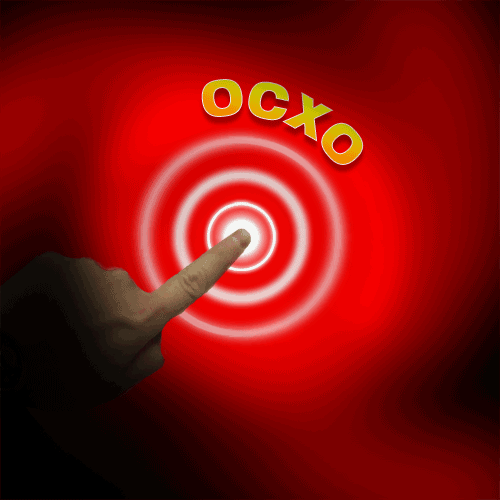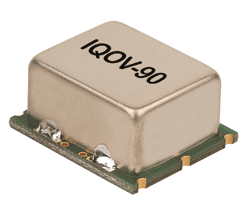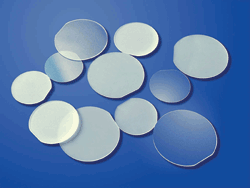
“OCXO” is the acronym for “oven-controlled crystal oscillator,” a passive component that holds a frequency steady to maintain and enhance voice and data integrity in such devices as cell phones and global positioning systems. As Karl Ward of C-MAC Frequency Products explained in Electronic Products in 2005, “In an OCXO, the effect of ambient temperature is virtually eliminated by enclosing the entire oscillator within an 'oven' maintained at a constant temperature above the upper end of the specified operating temperature range. OCXOs can offer frequency stabilities up to three orders of magnitude better than the most stable TCXOs [temperature-compensated crystal oscillators], but are bulkier, higher in price and, even after initial warm-up, generally consume at least 1 W at steady state.”

Fig. 1: Today’s OCXOs must offer higher frequency levels, tighter stabilities, improved phase noise and jitter characteristics, wider operational temperature ranges, and more-compact form factors.
Uwe Schweickert, R&D Manager for oscillator provider IQD in 2012 described stability of an OCXO (see Fig. 1 ). “The key item for consideration when looking to ensure OCXO stability is the characteristics of the crystal at the heart of its construction (see Fig. 2 ).

Fig. 2: The key to ensuring OCXO stability is in the characteristics of the crystal at the heart of the OCXO’s construction.
“Crystal stability is defined by:
“1. Aging stability: Typically a 10-MHz OCXO will see its stability impinged upon by around 50 ppb/year, with high-end OCXO devices only witnessing a deterioration of perhaps 20/30 ppb/year. This parameter is very important in relation to the overall system stability for a long period of operation.
“2. Short-term stability: For periods of 1 s up to 100 s, short-term stability is of prime importance. To reach good short-term stability, a crystal with a high quality factor (Q-factor) is necessary. This depends on the crystal mode, frequency, package, and various other factors associated with its production. A third-overtone crystal reaches higher Q-factors compared with the fundamental mode at the same frequency. For a fifth overtone at the same frequency, the Q-factor is also better, but resistance levels will also increase. It is therefore very challenging to create low-frequency crystals in a fifth overtone. Also the crystal‘s high resistance can hamper the oscillator circuit’s ability to maintain stable oscillation under all operational conditions.
“An alternative stabilizer is the highly stable miniature temperature-compensated crystal oscillators (TCXOs), wrote Greg Arthur of oscillator provider Valpey Fisher in Electronic Products in 2008. “These have helped a great deal, but some applications require the stability only available from an ovenized oscillator. This is where the designer starts to run into trouble, as typical oven-controlled crystal oscillators (OCXOs) consume multiple watts of power, making them unsuitable for use in battery powered systems.”
“The next step is to examine OCXOs. Traditional OCXO technology uses SC-cut crystals because they have a relatively flat temperature response curve (around 80° to 95°C) and an extremely high Q (around 500,000 for a 10-MHz round crystal). The crystal element is heated 5° to 10°C above the maximum operating temperature and held steady, producing minimal frequency variation due to external ambient temperature changes; 5 to 10-ppb temperature stability is commonly available.
“The major problem is the ample current needed to heat the OCXO. Reviewing offerings from several OCXO manufacturers we find the lowest power consumption available for conventional ovens (in steady state) to be around 1.5 W with an initial warm-up power consumption around 3 to 4 W. This is mostly because these OCXOs use a separate vacuum-sealed crystal soldered to a thermally “lossy” PCB onto which is mounted a transistor pumped with current to heat the crystal element to the required 90° to 95°C.
“The size of a conventional OCXO also becomes prohibitive for portables. The smallest available device comes in a DIP14 package, which, although small, is not small enough to fit in today’s portable radio.”
Sources:
Advertisement
Learn more about Electronic Products Magazine





